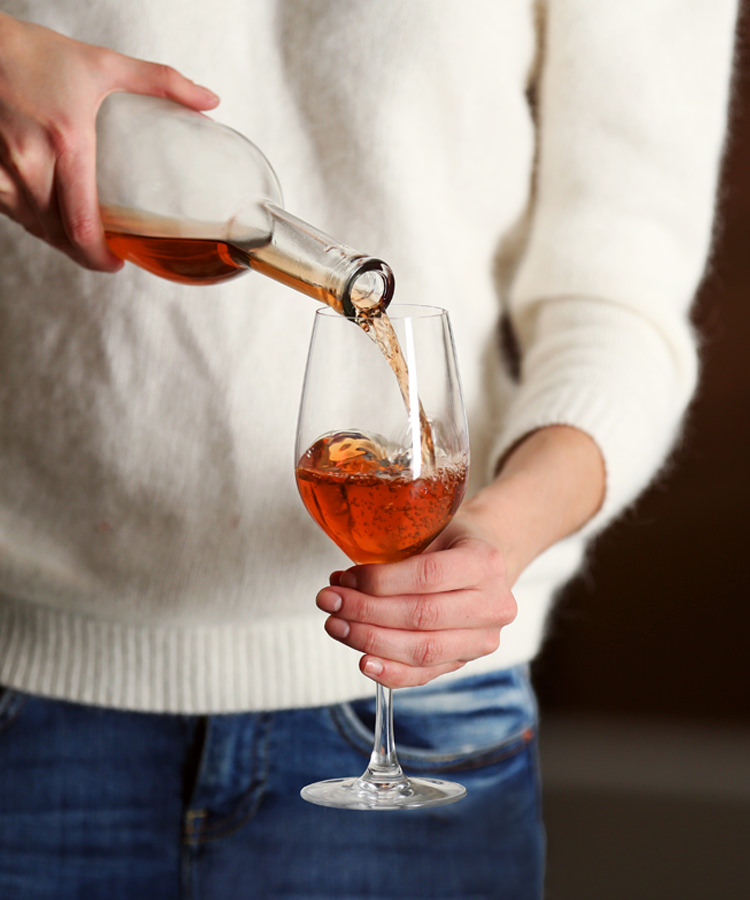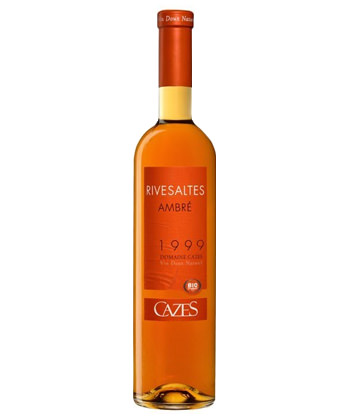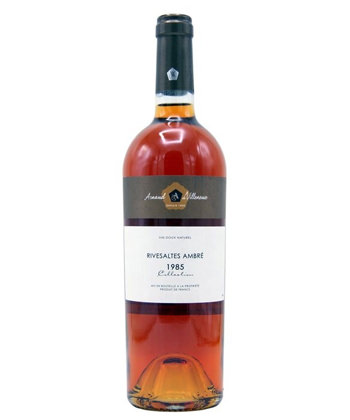If you haven’t heard of Rivesaltes, Maury, or vins doux naturels, you’re not alone. Despite their rich history, these jewels from the South of France get almost no press — especially compared to other dessert wines like port or sherry.
But Rivesaltes deserves a closer look. It has a Grenache base, warm amber color, and flavors perfectly suited for this mulled-wine-drinking, pumpkin-spice-loving time of year. Essentially a three-way cross between sherry, port, and madeira, Rivesaltes’ moderate price point and century-long shelf life make it ripe for gifting and entertaining.
Rivesaltes hails from the calm, hilly region of Roussillon, squeezed between the Pyrenees and the Mediterranean Sea near France’s southwestern border. The area is best known for its juicy, chuggable reds, which Rivesaltes most certainly is not.
Rivesaltes starts out as a red or white wine. Like other dessert wines, Rivesaltes is fortified with neutral grape spirit during fermentation, which halts the process. The remaining wines are sweet and high in alcohol, clocking in at an average of 15.5 percent ABV. Fortification stabilizes the wine, killing yeast and any bacteria that would create off-flavors or aromas.
Then — and this is where it gets crazy, folks — winemakers put the wine in 5- to 10-gallon glass bottles called demi-johns and leave them outside… for a year. The wine is covered to prevent debris from getting inside, but otherwise Mother Nature is allowed to wreak absolute havoc on the juice. Temperature swings, humidity changes, sunlight, and darkness all affect the wine, transforming fresh fruit flavors into “cooked” or caramelized ones. Sunlight changes its color.
The mental image of southern France as a land of rolling hills, postcard-perfect villages, and Mediterranean waves is spot-on here. Its mild climate makes it perfect for winemaking, because these wines aren’t getting snowed on. Like fortification, the aging process prevents bacteria from forming at later times. In addition, it means this portion of the juice is aged prematurely, resulting in secondary flavors like cocoa, tobacco, or coffee.
After its year-long outdoor tenure, the wine is placed in barrels to continue aging for anywhere from five to 50 years. During this time Rivesaltes trades in some of its ripe fruit flavors for dried, cooked, and spicy tones. As with port or sherry, the wine is fortified to retain sweetness, oxidized to add complexity, and partially cooked to stabilize it and add more flavor.
The end result is wines that range in color from golden to ruby to dark brown, and combine sweet, candied flavors with spicy tones like baking spices, cocoa, fig, and sage. White versions, labeled “Ambre,” bring apricot and peach flavors to the table. (Trust me, nothing complements a slice of pie better than this.) Reds from Rivesaltes trade berry flavors for fig, cocoa, smoke, and coffee. With holiday desserts like gingerbread or buttery pies, the combination is second to none.
Rivesaltes is both indestructible and delicious. Because it’s oxidized during the winemaking process, you can safely leave the bottle open and the flavors won’t disappear or turn sour, as traditional table wines do.
Best of all, these days, Rivesaltes are increasingly available outside of Roussillon. Fantastic wineries like Domaine Cazes and Arnaud de Villeneuve are now available stateside — just ask your favorite shop clerk or jump online and find a bottle near you. Here are two favorites.


